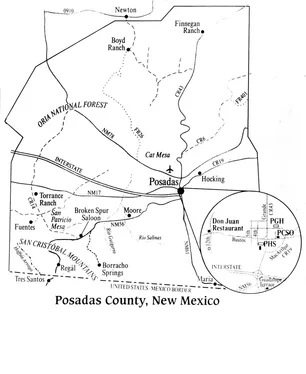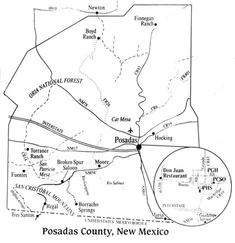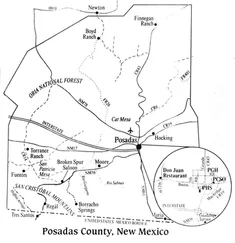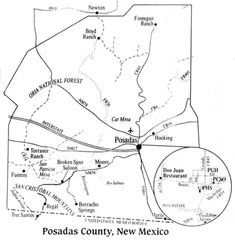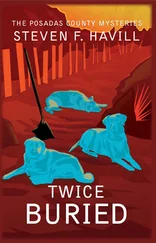Steven Havill - The Fourth Time is Murder
Здесь есть возможность читать онлайн «Steven Havill - The Fourth Time is Murder» весь текст электронной книги совершенно бесплатно (целиком полную версию без сокращений). В некоторых случаях можно слушать аудио, скачать через торрент в формате fb2 и присутствует краткое содержание. Год выпуска: 2011, Издательство: Poisoned Pen Press, Жанр: Полицейский детектив, на английском языке. Описание произведения, (предисловие) а так же отзывы посетителей доступны на портале библиотеки ЛибКат.
- Название:The Fourth Time is Murder
- Автор:
- Издательство:Poisoned Pen Press
- Жанр:
- Год:2011
- ISBN:нет данных
- Рейтинг книги:3 / 5. Голосов: 1
-
Избранное:Добавить в избранное
- Отзывы:
-
Ваша оценка:
- 60
- 1
- 2
- 3
- 4
- 5
The Fourth Time is Murder: краткое содержание, описание и аннотация
Предлагаем к чтению аннотацию, описание, краткое содержание или предисловие (зависит от того, что написал сам автор книги «The Fourth Time is Murder»). Если вы не нашли необходимую информацию о книге — напишите в комментариях, мы постараемся отыскать её.
The Fourth Time is Murder — читать онлайн бесплатно полную книгу (весь текст) целиком
Ниже представлен текст книги, разбитый по страницам. Система сохранения места последней прочитанной страницы, позволяет с удобством читать онлайн бесплатно книгу «The Fourth Time is Murder», без необходимости каждый раз заново искать на чём Вы остановились. Поставьте закладку, и сможете в любой момент перейти на страницу, на которой закончили чтение.
Интервал:
Закладка:
Anthony Zamora states that the second man was not in the area when he arrived, and might not have known about the accident. Mr. Zamora did not know the names of the two men, but states that he hired them in Reserve for day labor. He doesn’t know where the other man went, but he likely hitched out of the area.
A search of the body shows no documentation; a scrap of spiral notebook paper with a phone number was also found in the dead man’s jacket pocket.
Fidel Romero states that the men stopped at his store earlier in the day and inquired about work. He says that he believes the two were illegals, but didn’t think much about it.
The incident report, signed by Deputy Albert Romero, included a series of photographs. Estelle read the report again. If deputy Albert and store owner Fidel Romero were related, that made life a little more interesting.
The photographs included one panoramic shot showing that when the gnarly piñon tree in question had been chain-sawed down, it had propped itself up on broken limb wood. Several other trees had been cut in the immediate area and the ground was a welter of boot-trapping slash. The bright scars of freshly cut limbs dotted the felled piñon trunk for a dozen feet, to a point where the tree trunk was suspended two feet above the ground by the remaining broken limbs.
A close-up view showed the stub of a dead limb low on the left side. The stub had been deeply nicked by the saw’s chain, and a dark spatter of what could have been blood-there was too much for it to be bar oil-sprayed the bark and the ground nearby. The chain saw was still wedged upside down among the cut limbs, no doubt unmoved from where it had been flung.
Estelle shuffled the photos and looked hard at a third that showed the victim. He had crawled nearly a dozen feet, spraying the ground and himself with blood as he did so. Estelle grimaced, imagining the moments of panic. The young worker, perhaps twenty-five years old, had managed to prop himself up against a shaggy juniper. The wound in his leg, deep and ragged, would have been fatal in a few minutes at most. Blood loss must have been from a gusher, enough to render the victim immobile in seconds. By the time he had crawled even a few yards, he would have been dizzy and disoriented as his blood pressure plummeted. In a final slump, he had leaned back against the tree, both hands clutching his leg in a vain attempt to stop the pumping blood from his lacerated femoral artery.
“What a mess,” Estelle whispered. Where had his partner been at that moment? Standing rooted in panic? Ready to faint at the sight of the spurting blood? Even if the second man had been on the scene with his wits about him, the situation would have been desperate. A tightly cinched belt might have worked to stem the tide, but the accident had happened so far from medical help that time was their enemy.
Other photos showed a faded yellow pickup truck fifty yards away, its bed a third filled with neatly stacked firewood. A gas can and a plastic quart bottle of oil rested on the tailgate, along with a small blue cooler and a second chain saw.
Estelle scanned the photos again. The other woodcutter had fled, but he had not run for help. He had not even made an anonymous phone call-if the two men had owned a cell phone, which was unlikely at best. The man had simply abandoned his dying companion. “Why would you do that?” Estelle wondered aloud. An accident was an accident. What did it matter if the pair had indeed been illegals? One woodcutter could have bundled the other injured man into the truck, and driven for help. Judging by what Estelle could see of the wound, a mad dash to the clinic in the nearest tiny village would have been futile. The injured man would have drained out long before they had driven the seventeen miles of rough roads to the nearest nurse-practitioner or physician’s assistant. But you didn’t even try, she thought.
Frowning, she leafed back to the photos of the tree and the offending limb. The saw would have been snarling full throttle as the young man touched the chain to the dead limb spar. The scene brought back memories of another incident to which Estelle had responded as a young deputy, when an older man had been building a stock fence south of Posadas. He’d been cutting railroad ties when the saw kicked and bit him savagely in the face, laying open cheek and jaw, shattering teeth, and coming a hair’s breadth from the major arteries in the man’s neck. He had managed to stagger into his mobile home, splashing blood over everything. That he was even able to dial 911, much less mumble a garbled message, had been remarkable.
In this case, the clear digital photo showed that the limb had been free of bark, the hard gray of seasoned piñon. The saw’s flashing teeth had touched the wood, perhaps on the very tip of the saw’s bar, and Estelle could imagine how the teeth had bitten deep and then kicked up and back. If the sawyer was standing astride the trunk, twisting with the saw to reach down awkwardly for the limb with his boots caught in the snarl of limbs on the ground, he was an easy target. It was a moment of inattention, of carelessness, late in the afternoon after a full day of labor.
Estelle tapped the photos into a neat pile and sighed. From hopes and dreams, fueled by quick cash earnings and a pleasant day in the fragrant woods, to a moment of horror and total loss…not what the young man had had in mind when he and his friend had found their way across the border.
His friend. It wasn’t hard to imagine the other woodcutter fleeing. People panicked all the time. It was one thing to imagine heroism in the comfort of a living room chair, when no real threat actually loomed. When the moment came with all its ugly reality, there was no predicting how people would react. In this case, the blood and gore hurled by the saw, the shriek of pain, the impossible wound-all of that would have been enough to test the strongest nerves. Estelle suspected that the other cutter had run, too unnerved even to take the pickup truck. He had run out to the highway, run to hitch a ride, leaving his dying friend to be found by someone else.
“And now, the question is,” Estelle said aloud, “why do we need to know about all this?”
A brief memo had been included with the photos, signed by Deputy Albert Romero, that requested a check of the telephone number found scribbled on the scrap of paper in the dead man’s coat pocket.
Estelle frowned at the number, eyebrows arching up in surprise. Her mouth formed a silent O as she stared at the number, puzzled by its familiarity. The prefix indicated Regál, the tiny village just south of the pass that shared its name, a very long way from the piñons of Catron County.
She thumbed the Rolodex and stopped at a well-worn card. The phone number matched the one scrawled on the slip of paper recovered from the dead woodcutter’s pocket.
Chapter Twelve
Coincidence made Estelle Reyes-Guzman uneasy. She had known the Contreras family for years-the elderly and crippled Emilio, who spent practically every waking moment working for the mission in Regál, Iglesia de Nuestra Señora; his wife, Betty, the energetic, bustling lady whose volunteer activism filled her days after a long career in the elementary classroom; even their three grown children, who returned infrequently to the little border village to celebrate the long string of birthdays and anniversaries.
But as Estelle drove south toward the pass, she considered the other odd pieces of this puzzle that had presented themselves. An unidentified man, odds strong that he was an illegal alien, had managed to lose control of a chain saw, which had then chewed him to death. His partner had vanished without lifting a finger to help the mortally injured man. All of this had happened 150 miles to the north, yet the sole documentation on the victim was a slip of paper with the telephone number of Emilio and Betty Contreras in Regál.
Читать дальшеИнтервал:
Закладка:
Похожие книги на «The Fourth Time is Murder»
Представляем Вашему вниманию похожие книги на «The Fourth Time is Murder» списком для выбора. Мы отобрали схожую по названию и смыслу литературу в надежде предоставить читателям больше вариантов отыскать новые, интересные, ещё непрочитанные произведения.
Обсуждение, отзывы о книге «The Fourth Time is Murder» и просто собственные мнения читателей. Оставьте ваши комментарии, напишите, что Вы думаете о произведении, его смысле или главных героях. Укажите что конкретно понравилось, а что нет, и почему Вы так считаете.
